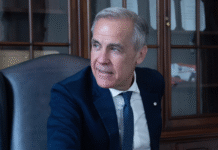OCTOBER 6,2025
RED FM News Desk
Coffee lovers across Canada may soon feel a slight pinch in their wallets as Tim Hortons has confirmed a modest increase in the price of its coffee. The first such change in over three years.
The iconic Canadian coffee chain stated that the adjustment is being made in response to ongoing inflationary pressures. While the increase may appear small averaging around three cents per cup. The company insists it’s a necessary step to keep pace with the broader economic climate.
“Our pricing strategy isn’t based on any one factor,” said a Tim Hortons spokesperson, “but rather aims to stay in line with inflation over time while continuing to offer great value.”
The chain, known for its affordability and wide reach, emphasized that its long term goal remains unchanged, to provide everyday low prices without compromising on quality.
Although the 1.5% increase may seem minimal, it comes at a time when the cost of living continues to rise for Canadians. According to the company, the cost of coffee beans alone has more than doubled in recent years, jumping from $1.58 to $3.90 USD per pound, based on MarketWatch data.
In this context, Tim Hortons maintains that the price bump is “more than reasonable.”
This isn’t an isolated case. Canadians have already been paying more for coffee at the grocery store. In fact, Statistics Canada reported that retail coffee prices in August were up by nearly 28% compared to the same month the previous year, largely due to poor weather in coffee-producing countries like Colombia which supplies a quarter of Canada’s beans.
Additionally, tariffs on Brazilian coffee imports into the U.S. under former President Trump’s trade policies have also impacted prices, with ripple effects reaching Canada due to cross-border supply chains.
While a few cents more per cup may not seem like much, in a country where Tim Hortons coffee is a daily ritual for millions, the change is certainly noticeable. It’s a reminder of how global economics — from climate change to international trade policies — can hit close to home, one cup at a time.








